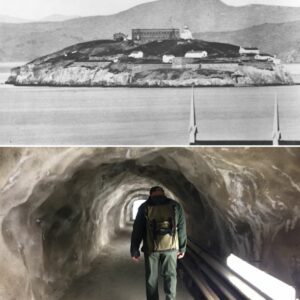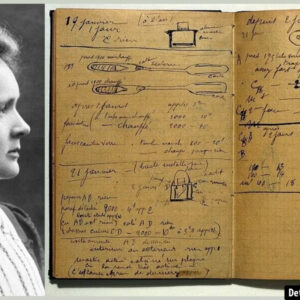In the aftermath of World War II, the United States sought to push the boundaries of military technology, leading to one of the most impactful and controversial experiments in history: the Bikini Atoll nuclear tests. In 1946, the Baker Test, an underwater detonation of a 23-kiloton atomic bomb, revealed the true destructive power of nuclear weapons. As the explosion rocked the remote Pacific island, it not only left a crater in the ocean but also changed the course of nuclear warfare and international relations forever. This test, part of the larger Operation Crossroads, remains a defining moment in the history of atomic energy and warfare.
Baker Test: The Underwater Explosion
On July 25, 1946, the United States detonated a 23-kiloton atomic bomb 90 feet underwater in what became known as the Baker Test. This underwater detonation was designed to evaluate the effects of a nuclear explosion on warships and naval infrastructure. The test involved a fleet of 95 target ships, including battleships, aircraft carriers, submarines, and even a few captured German and Japanese ships. The target ships were lined up in Bikini Lagoon, forming a cluster of 20 ships per square mile. This density was far greater than military doctrine would normally allow, as the objective was to assess the damage at various distances from the blast center.
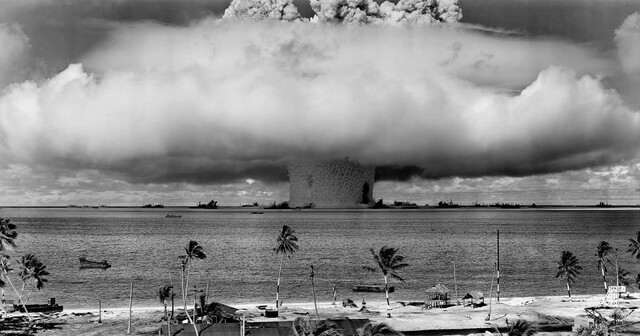
The test was not about recreating a realistic battle scenario; instead, it was designed to measure the extent of destruction from the blast and the resulting radiation. Ships were equipped with scientific instruments to measure air pressure, ship movement, and radiation levels. For an added level of experimentation, live animals were placed aboard the ships, including pigs, goats, rats, and guinea pigs, to study the effects of radiation on living organisms.
The detonation was meant to be a demonstration of nuclear power, but it was also a harsh lesson in the destructive capabilities of atomic energy. As the bomb exploded underwater, it created a massive fireball, sending out shockwaves that would devastate the fleet of target ships. The results were more spectacular and destructive than anyone could have anticipated.
Video
Watch the 1946 Report on the Atomic Bomb Test at Bikini Atoll in stunning 4K, 50FPS color footage and experience this historical event in incredible detail.
The Unique Effects of the Explosion
The Baker test produced many unusual phenomena, some of which were never before seen in nuclear explosions. Upon detonation, a gas bubble rapidly expanded and pushed against the water, creating a supersonic hydraulic shockwave. This shockwave spread outward, damaging the hulls of nearby ships. As the bubble reached its full size, it began digging a shallow crater in the seafloor, 30 feet deep and 2,000 feet wide. At the same time, the shockwave pushed the water above it into a geyser-like spray dome, which erupted through the surface of the ocean.
The detonation also produced a Wilson cloud, a phenomenon that occurs when low-pressure air behind the shockwave causes water vapor to condense and form a massive, swirling cloud above the explosion. The Wilson cloud obscured the developing fireball, and for a brief moment, the scene was shrouded in fog, adding an eerie and surreal aspect to the test. This phenomenon was only the beginning of the visual spectacle created by the explosion.
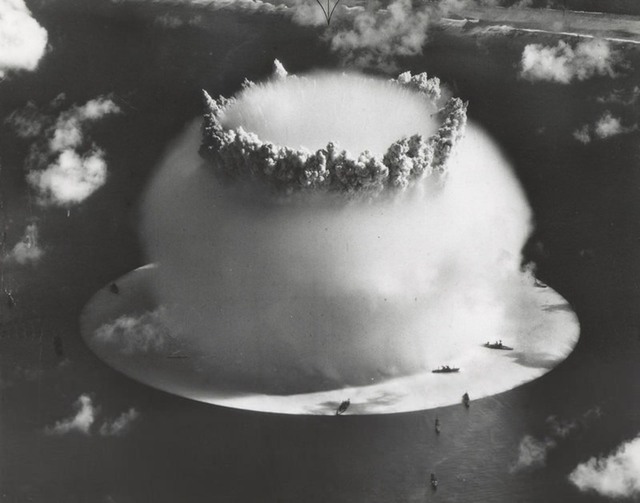
The Aftermath: The Crater and Wilson Cloud
As the explosion’s shockwave and fireball faded, the underwater crater and the Wilson cloud left lasting marks on the environment. The crater formed at the seafloor was a symbol of the force unleashed during the test. Although the shockwave did not directly damage the surrounding land, it was clear that the environmental consequences would be profound. The tests raised significant questions about the long-term impacts of nuclear warfare, particularly on the ecosystems and organisms that could be affected by radiation.
The Baker Test also marked a major milestone in the history of nuclear weaponry. The destructive effects of the explosion were far greater than what had been anticipated, and the U.S. military began to reassess its strategies regarding the deployment of nuclear weapons. The eerie spectacle of the explosion, along with the unprecedented formation of the Wilson cloud, became emblematic of the dangers of nuclear testing.
Scientific Experiments and Animal Testing
A critical aspect of the Baker Test involved the scientific experiments conducted with the live animals placed aboard the target ships. More than 200 pigs, 60 guinea pigs, 204 goats, and thousands of rats and mice were used to study the effects of radiation. These animals were exposed to varying levels of radiation, and their health was monitored to understand the genetic effects of nuclear weapons on living organisms.
In addition to the animals, various scientific instruments were deployed to measure the immediate and long-term effects of the blast on ship structures and their surroundings. The data gathered from these experiments played a pivotal role in shaping future nuclear tests and understanding the broader implications of radiation exposure on both humans and animals. These experiments provided a dark glimpse into the true power of atomic energy and its lasting impact on life and the environment.
Challenges and Decontamination Efforts
In the aftermath of the Baker Test, the U.S. military faced significant challenges in dealing with the contamination left by the explosion. The Navy developed a CounterMeasure WashDown System (CMWDS) for ships, designed to flush the exterior surfaces with a spray of saltwater in the event of a nuclear attack. This system was intended to prevent nuclear contaminants from settling into cracks and crevices, thus minimizing radiation exposure.
Despite these precautions, the environmental and health effects of the test were still being felt long after the explosion. The Bikini Atoll region remained contaminated for decades, and the islands themselves became a symbol of the global conversation about nuclear testing and its far-reaching consequences.
Legacy of the Bikini Atoll Tests
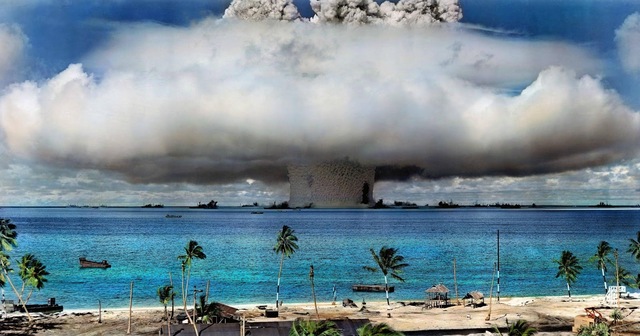
The Baker Test and its associated tests during Operation Crossroads had lasting effects on nuclear strategy and the international conversation about nuclear weapons. The tests demonstrated the immense destructive power of atomic bombs and highlighted the need for further research into the environmental and health impacts of nuclear warfare. They also played a role in the eventual formation of international treaties and efforts to curb nuclear testing.
The Bikini Atoll tests are a reminder of the destructive power of nuclear weapons and the need for responsible stewardship of atomic energy. While the tests themselves were conducted in secrecy, the legacy of the Baker Test and the Bikini Atoll tests has become a key part of global history, reminding us of the importance of peace, diplomacy, and international cooperation in a nuclear age.
Video
Watch the original color film of the Baker Atom Bomb test at Bikini Atoll in 1946 and witness this pivotal moment in nuclear history.
Conclusion: A Pivotal Moment in Nuclear History
The underwater detonation of the 23-kiloton nuclear weapon at Bikini Atoll was not just an experiment; it was a powerful symbol of the atomic age and the dangers of nuclear warfare. The test provided invaluable data on the effects of nuclear weapons on military vessels, as well as a glimpse into the environmental consequences of such powerful explosions. It also marked the beginning of a new era in which nuclear weapons would play a central role in global politics and security.
As we look back on the Bikini Atoll tests, we are reminded of the responsibility that comes with harnessing the power of atomic energy. The legacy of these tests continues to influence modern nuclear policy, and the lessons learned from Bikini Atoll remain relevant as the world faces ongoing challenges in the realm of nuclear weapons and arms control.

